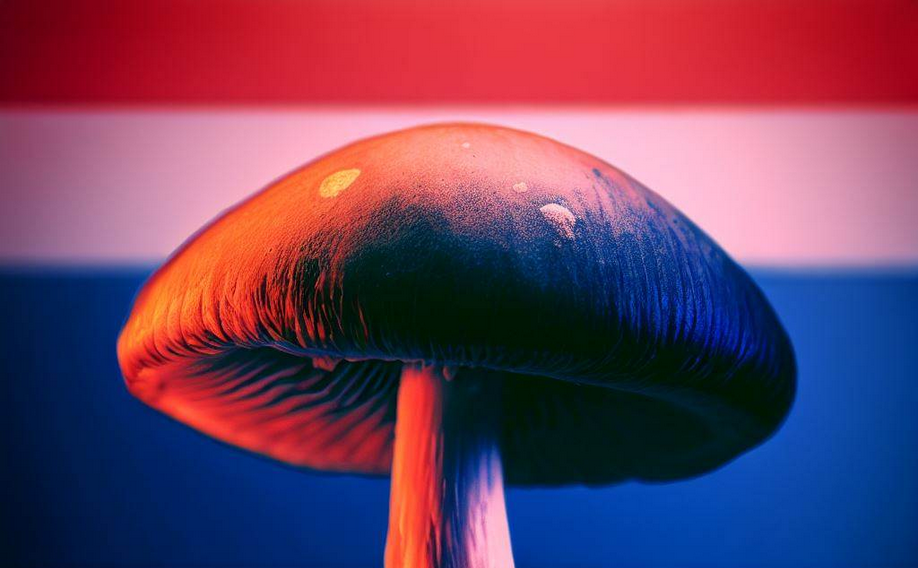Psilocybin therapy in the Netherlands
Magic truffles, also known as psilocybin truffles, contain psilocybin and psilocin, among other things. These are psychedelic substances that cause the psychedelic/hallucinogenic effects. In the Netherlands magic truffles are legal because they are not mentioned in the opium law. Because, despite the magic mushroom and psilocybin ban, we were able to work with the psilocybin-containing truffles all along, the Netherlands is the front runner when it comes to experience with psilocybin therapy.

Psilocybin therapy is actually psilocin therapy
Psilocybin is a substance that is virtually non-psychoactive. When psilocybin is ingested, it is converted in the body to psilocin, the active form of the substance. Psilocin has a structure similar to that of the neurotransmitter serotonin and has an affinity for serotonin receptors in the brain. This explains the effects of psilocybin on serotonergic neurotransmission. Psilocybin specifically affects the serotonergic systems in the brain, including the 5-HT2A receptors. By binding to these receptors, psilocin causes changes in neurotransmission.
Psilocin therefore provides the following effects:
- Hallucinations and changes in perception: Psilocin can cause visual, auditory and sensory hallucinations. This is because it interferes with visual and sensory processing activity in the brain.
- Changes in consciousness and thoughts: Psilocybin can alter consciousness and affect thought processes. It can lead to a heightened sense of connection, introspection, creativity and mystical experiences.
- Emotional effects: Psilocybin can cause strong emotional changes ranging from euphoria and bliss to fear and sadness. These effects depend on the mood and environment in which the substance is ingested.
- Neuroplasticity and therapeutic potential: Research on psilocybin/psilocin has also shown that it promotes neuroplasticity, which may contribute to its therapeutic effects. It is being researched as a treatment for conditions such as depression, anxiety disorders, addiction and post-traumatic stress disorder (PTSD).
What is psilocybin therapy used for?
Psilocybin is currently the most researched psychedelic because it is considered a catalyst for therapy in many situations due to its beneficial properties. When we combine science and anecdotal evidence, psilocybin therapy can be effective for the following:
- Depression and mood disorders
- Anxiety disorders (eg, social anxiety disorder, generalized anxiety disorder)
- Post-traumatic stress disorder (PTSD)
- Addiction disorders (e.g. alcoholism, tobacco addiction)
- Obsessive Compulsive Disorder (OCD)
- Eating disorders (e.g. anorexia nervosa)
- Cluster headache
- Migraine
- Spiritual development and enrichment
- Pain relief (e.g. in terminal illnesses)
- Improving creativity and problem-solving ability
- Relief of psychological distress in cancer patients
- Autism Spectrum Disorder (ASD)
- ADHD (Attention Deficit Hyperactivity Disorder)
- Dysthymia (chronic depression)
- Improving quality of life in the elderly
- Improving mental health in healthy adults
- Improving empathy and social connection
- Processing grief and loss
- Treatment of postpartum depression
- Improving the quality of life in patients with chronic diseases
- Reduction of stress and burnout symptoms
- Improving sleep disorders
Psilocybin therapy is not the solution for everyone
Although psilocybin is one of the safest substances, some conditions can be exacerbated by the use of psychedelics and some combinations with drugs can be life-threatening. It is always advisable to seek the advice of a professional first if you are on any psychoactive medication or if you have a psychiatric condition. On the page of the intake at Trip therapy the contraindications are listed so that you can carry out the first check yourself. After completing the intake, a second check will be carried out by trip therapy.
Intake Triptherapy in Dutch | Intake Trip Therapy in English
